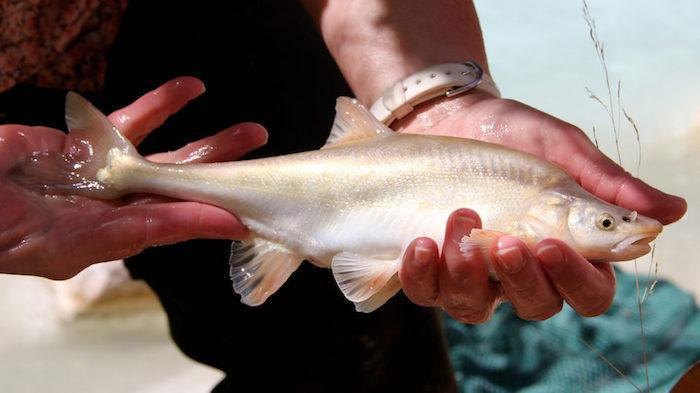
Humpback chub have been released into Bright Angel Creek in Grand Canyon National Park/NPS
On May 14, biologists with the National Park Service, U.S. Fish and Wildlife Service, and Bureau of Reclamation released endangered humpback chub, an endangered fish species endemic to the Colorado River basin, into Bright Angel Creek in Grand Canyon National Park following six years of successful removal of nonnative trout.
This effort, just announced Friday, follows successful translocations to Havasu Creek, where a reproducing population has been established. This is an important milestone in the long-term effort to improve the species' odds of survival through the establishment of satellite spawning populations outside of the Little Colorado River within the park.
The humpback chub is well adapted to natural conditions of the Colorado River, including the river's low visibility and seasonally variable flows and temperatures. The introduction of non-native fishes as well as dam-induced changes in flow and temperature have caused serious declines in wild populations, and limited spawning to warm water tributaries below dams. Today the largest remaining population in the world is found in Grand Canyon National Park.
Fisheries biologists will monitor the population of humpback chub in Bright Angel Creek twice a year and will continue to remove nonnative trout. To assess growth and survival of translocated fish, each humpback chub was tagged with a small micro-chip, similar to those used in household pets. An antenna system was also installed downstream of the Bright Angel Campground to detect movements of tagged humpback chub and other fishes in and out of the creek.
"I'm excited that we have reached this critical milestone in endangered fish recovery," said Jeanne Calhoun, the park's chief of science and resource management. "I would like to acknowledge the incredible support by our partners, and the efforts of our fisheries technicians and volunteers who worked to prepare for this native humpback chub translocation,"
Fisheries biologists focused on Bright Angel Creek for intensive nonnative fish control due to its large population of brown trout. Brown trout are known to prey on native fishes in Grand Canyon. The reduction of brown trout and rainbow trout populations by more than 80 percent has resulted in rebounds in native fishes in Bright Angel Creek, and will increase the likelihood of survival of translocated humpback chub, while reducing predation risk to those in the Colorado River, according to park staff.
There are no fishing restrictions at Bright Angel Creek related to translocation activities. Anglers should be familiar with the identifying characteristics of humpback chub and other native fishes to avoid any accidental harvest of these endangered or protected fishes. If any native species are incidentally caught, they must be immediately released unharmed.




 Support Essential Coverage of Essential Places
Support Essential Coverage of Essential Places







Comments
Great news!